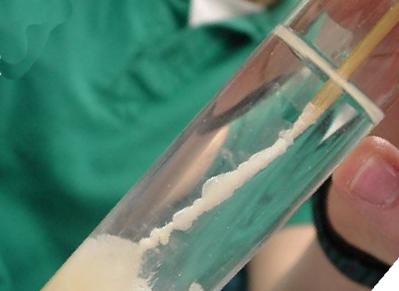 In our first instalment of DIY Biology Instructions, we’re going to be looking at extracting DNA. This series of instructions will cover a number of interesting and easy biology/biotechnology techniques that you can do yourself – often with quite minimal amounts of lab equipment. Rather than reinvent the wheel, these articles seek to find and link you to all the best relevant instructions on the web. DIY Biology is fun and great for teaching science to anyone who is interested. If you enjoy DIY biology, then find or found a public group near you!
In our first instalment of DIY Biology Instructions, we’re going to be looking at extracting DNA. This series of instructions will cover a number of interesting and easy biology/biotechnology techniques that you can do yourself – often with quite minimal amounts of lab equipment. Rather than reinvent the wheel, these articles seek to find and link you to all the best relevant instructions on the web. DIY Biology is fun and great for teaching science to anyone who is interested. If you enjoy DIY biology, then find or found a public group near you!
Find out how to extract DNA from any living thing after the break!
The Basics
DNA extraction is a process used to isolate DNA from everything else in a tissue sample. DNA is a tiny molecule, but each living cell has a huge amount of it. The trick to properly extracting DNA lies in getting rid of everything else in the cell – cell membranes, proteins, etc.
Once you have your DNA there are lots of things you could do with it. You could look at it under a microscope, place it in a vial, or you could quantify the DNA yourself. You could even amplify a part of the DNA (perhaps a single gene) and then get it sequenced! We’ll be covering some of these steps in future articles.
Instructions
There are many different ways to extract DNA. Most scientists use commercial DNA extraction/purification kits (such as these). However it is easy to do DNA extraction with simple household items. Check out some of the videos below which cover strawberry DNA extraction:
It should be noted that these methods, while very fun, might not get you the best sequencing results if you intend to go down that road – as you will probably want more sophisticated things like a pH stabilising buffer and a way to remove RNA from your solution. However for non-sequencing applications these are unnecessary.
If you’re looking for a slightly more advanced tutorial on the topic check out this great video by Cathal Garvey of indiebiotech.com:
Further Reading
- Wikipedia page on DNA Extraction
- Check out this great instructional ‘virtual lab’
- Various DNA Extraction Protocols
Remember to always be safe and follow the local biosafety guidelines. Here is an example from the Public Health Agency of Canada.















Hi there Your main site loads up seriously slow in my situation,
I am not sure who’s issue is that although wikipedia opens up relatively good.
Anyway, I appreciate you for placing such
a fantastic article. I suppose this has become beneficial to many
people . This is undoubtedly terrific what you
have concluded on this page and want to see interesting
articles from your website. To obtain more knowledge
through articles you write-up, I’ve saved this url.
76% Off Kodak HERO 5.1 All-in-One Printer Ink – Inkjetsclub.co.uk – InkjetsClub
https://inkjetsclub.co.uk/